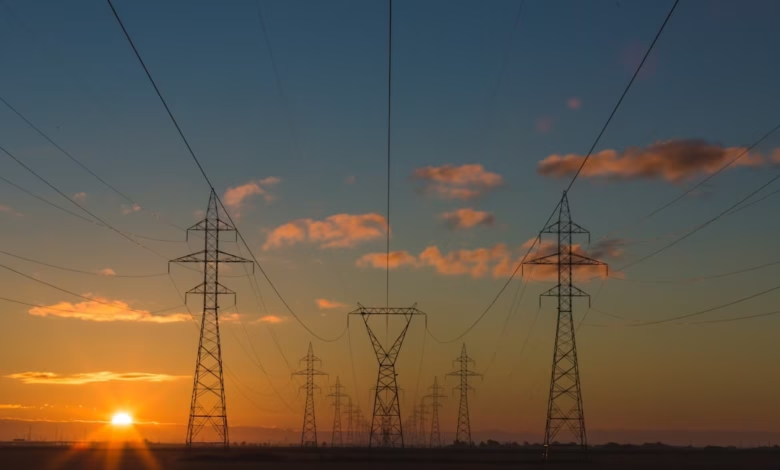Navigating the Future of Energy: An In-Depth Look at Fossil Fuels and the Energy Transition towards Renewables

In today’s rapidly evolving global energy landscape, fossil fuels—namely oil, coal, and natural gas—continue to play a pivotal role in meeting the world’s energy demands. Despite the growing emphasis on renewable energy sources, such as solar power, wind energy, and hydropower, fossil fuels remain integral to energy production and consumption. This article delves into the current state of fossil fuel production and consumption, shedding light on their impact within the broader context of energy markets and energy policy. As we navigate the energy transition, it is crucial to compare the longstanding reliance on fossil fuels with emerging renewable alternatives, alongside innovations in energy efficiency and carbon capture technologies. Furthermore, we will explore future trends that could shape energy economics, including the rise of electric vehicles, smart grids, and distributed energy systems. As climate change continues to challenge our energy security, understanding these dynamics becomes increasingly vital for investors, policymakers, and consumers alike. Join us as we unpack the complexities of fossil fuels and their role in the quest for a sustainable energy future.
- 1. Understanding Fossil Fuels: Production and Consumption in the Global Energy Landscape
- 2. The Energy Transition: Comparing Fossil Fuels with Renewable Energy Sources
- 3. Future Trends in Energy Markets: The Role of Energy Efficiency and Carbon Capture Technologies
1. Understanding Fossil Fuels: Production and Consumption in the Global Energy Landscape
Fossil fuels, comprising oil, coal, and natural gas, play a pivotal role in the global energy landscape. As the backbone of energy production for many countries, they account for a significant portion of global energy consumption. Understanding the production and consumption dynamics of fossil fuels is essential, especially as we navigate the challenges posed by climate change and the urgent need for an energy transition.
Globally, fossil fuels still dominate energy markets, fulfilling around 80% of total energy demand (International Energy Agency [IEA], 2023). Oil remains a critical energy source for transportation and industry, while natural gas is increasingly favored for its lower carbon emissions compared to coal. However, coal continues to be utilized in many developing nations, particularly in thermal energy generation, despite its environmental impact.
The energy transition is a key focus of current energy policy, aiming to reduce dependency on fossil fuels and promote renewable energy sources such as solar power, wind energy, and hydropower. This shift is supported by innovations in energy efficiency and energy storage technologies, which enhance the viability of integrating renewable energy into existing grids. As energy markets evolve, investments in green energy and energy R&D are critical for developing sustainable solutions and infrastructure.
Carbon capture technologies are emerging as a potential method to reduce emissions from fossil fuel consumption, allowing for a more balanced approach during the transition to renewable energy. Additionally, energy security remains a concern as countries navigate energy imports and exports, particularly in relation to fossil fuels. The rise of electric vehicles and hydrogen energy systems exemplifies the ongoing innovations aimed at reducing reliance on fossil fuels.
In summary, while fossil fuels continue to play a significant role in the global energy landscape, the push for renewable energy and energy innovations marks a vital step toward a sustainable future. Understanding these dynamics is crucial for policymakers, energy investors, and stakeholders in the energy sector as they shape the future of energy consumption and production.
References:
International Energy Agency (IEA). (2023). World Energy Outlook 2023. Retrieved from [link to the source]
2. The Energy Transition: Comparing Fossil Fuels with Renewable Energy Sources
The global shift towards an energy transition is increasingly pivotal in addressing climate change and promoting sustainable development. Fossil fuels—oil, coal, and natural gas—have long dominated energy production and consumption, but their environmental impact has spurred a movement toward renewable energy sources. This transition is not just a trend; it reflects changing energy markets, evolving energy policies, and a growing awareness of energy efficiency.
Renewable energy sources such as solar power, wind energy, hydropower, and bioenergy are at the forefront of this transition. Unlike fossil fuels, which emit significant amounts of carbon dioxide and other greenhouse gases when burned, renewable energy sources provide cleaner alternatives that contribute to energy security and reduce environmental degradation. For instance, solar power and wind energy are experiencing rapid growth due to advancements in energy storage technologies that enhance their reliability and efficiency. This shift is supported by investments in energy R&D, which are crucial for developing innovative solutions like smart grids and thermal energy systems.
The comparison between fossil fuels and renewable energy also highlights the economic implications of the energy transition. As countries aim to meet international climate commitments, the demand for clean energy technologies is rising. This transition creates new opportunities in energy exports and imports, as nations invest in green energy infrastructure. Hydrogen energy is emerging as a potential game-changer, offering a versatile energy carrier that can complement other renewable sources and promote energy transportation across different sectors.
Despite the benefits, the energy transition faces challenges, including the need for significant energy investments and the development of efficient carbon capture technologies to mitigate emissions from existing fossil fuel infrastructure. However, the long-term benefits of a decarbonized energy system—such as improved energy economics and enhanced energy security—are driving the momentum toward greener alternatives.
In conclusion, as we navigate the complexities of the energy transition, it is clear that while fossil fuels will continue to play a role in the global energy landscape, the future lies with renewable energy. By embracing innovations and investing in sustainable practices, we can build a resilient energy system that meets the needs of our planet and future generations.
3. Future Trends in Energy Markets: The Role of Energy Efficiency and Carbon Capture Technologies
The future of energy markets is increasingly shaped by the dual imperatives of energy efficiency and carbon capture technologies. As the world grapples with the realities of climate change and the pressing need to transition from fossil fuels, these innovations are set to play a pivotal role in shaping global energy trends.
Energy efficiency initiatives are crucial in reducing overall energy consumption while maintaining the same level of services. By optimizing energy use in buildings, transportation, and industrial processes, nations can significantly decrease their reliance on fossil fuels. For example, advancements in smart grids and distributed energy systems allow for better management of energy resources, minimizing waste and enhancing energy security. This shift not only supports the integration of renewable energy sources such as solar power and wind energy but also facilitates the growth of electric vehicles, further decreasing the demand for traditional fossil fuels.
Simultaneously, carbon capture technologies are emerging as a critical component in the fight against climate change. By capturing carbon dioxide emissions from sources like coal and natural gas power plants, these technologies help mitigate the impact of fossil fuel consumption on the environment. This innovation not only aids in reducing greenhouse gas emissions but also aligns with energy policies aimed at achieving net-zero carbon targets. When combined with energy storage solutions, carbon capture can make fossil fuel usage more sustainable during the energy transition.
Moreover, investments in energy R&D are expected to drive further innovations in energy efficiency and carbon capture. Governments and private sectors are recognizing the potential of hydrogen energy and bioenergy, both of which can serve as alternatives or supplements to fossil fuels. The development of offshore energy resources, including wind and hydropower, also presents new opportunities for diversifying energy portfolios and enhancing energy exports.
In conclusion, the role of energy efficiency and carbon capture technologies in future energy markets cannot be overstated. They represent a pathway toward a more sustainable and secure energy future, facilitating the transition from fossil fuels to greener alternatives. As global energy markets evolve, these innovations will be fundamental in shaping energy economics and ensuring a resilient energy landscape that addresses both climate change and energy demands.
In conclusion, the production and consumption of fossil fuels—oil, coal, and natural gas—remain central to the global energy landscape despite an increasing shift towards renewable energy sources. As we navigate the energy transition, it is crucial to understand the balance between maintaining energy security and investing in green energy innovations. The comparative analysis of fossil fuels and alternatives such as nuclear energy, hydropower, and bioenergy highlights the need for a robust energy policy that embraces energy efficiency and carbon capture technologies.
Future trends in energy markets will likely see enhanced integration of energy storage solutions, smart grids, and distributed energy systems, paving the way for a sustainable energy future. With the rise of electric vehicles and the potential of hydrogen energy, energy transportation dynamics are set to evolve, further influencing energy imports and exports.
As we face the challenges posed by climate change, proactive investments in energy R&D will be essential for fostering energy innovations that drive the transition toward a more sustainable and resilient energy economy. By prioritizing these developments, we can create a balanced approach that not only supports current energy demands but also aligns with global efforts to mitigate environmental impacts and secure a more sustainable future for generations to come.
References:
– [Insert list of sources here]





